Calibrachoa (Million Bells) Flower Profile
Written by Iris
Oct 28 2021
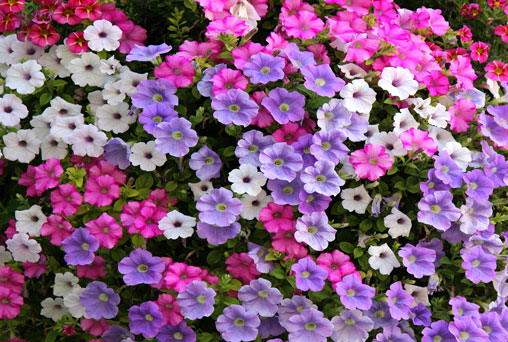
Calibrachoa flower (Million Bells), a prolific bloomer with 1-inch blossoms that resemble tiny petunias, is one of the most popular plants for growing outdoors in containers. Although in very warm climates, it is a short-lived perennial, it is grown almost everywhere annually. In hanging baskets, bowls, or mixed containers, it looks great. Calibrachoa also works well in unusual containers, such as colanders or even plastic laundry baskets.

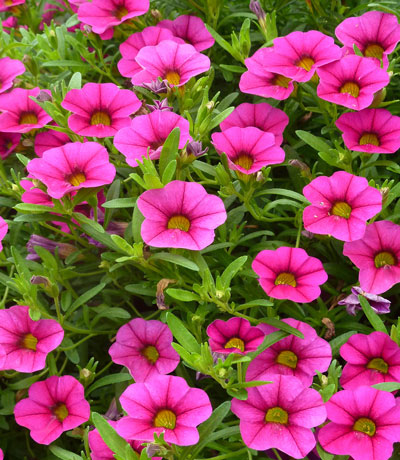
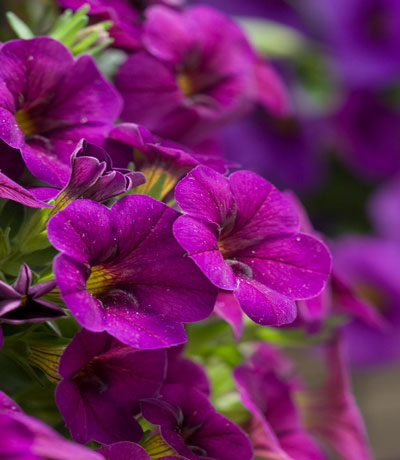
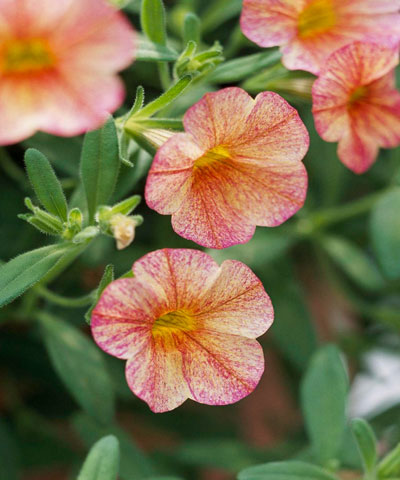
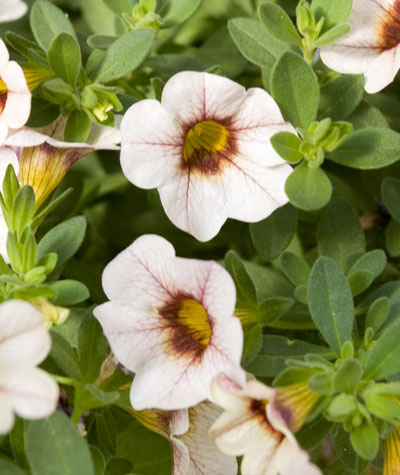
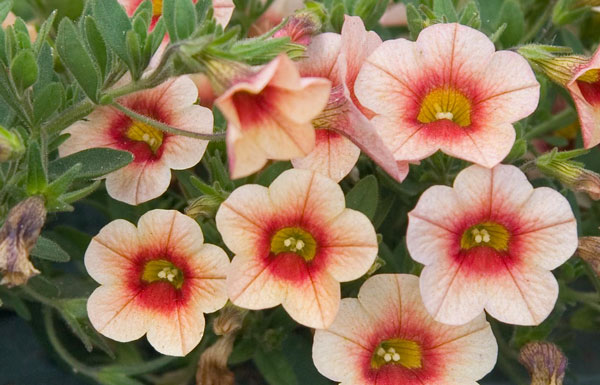
Place one or two tall ceramic pots near your home's entrance and fill with colorful Superbells to greet visitors.
Adorn arbors and pergolas with hanging baskets brimming with your favorite colors.
Plant window boxes that receive at least 6 hours of sunlight with colors that complement your home's exterior.
Shepherd's hooks are a great way to add hanging baskets for instant color by a patio, deck or poolside. Hooks are easily moved around for a fresh look.
Place a hanging basket outside your kitchen window to enjoy a burst of color whenever you’re cooking or doing dishes. This will attract hummingbirds and butterflies up close where you can most appreciate them.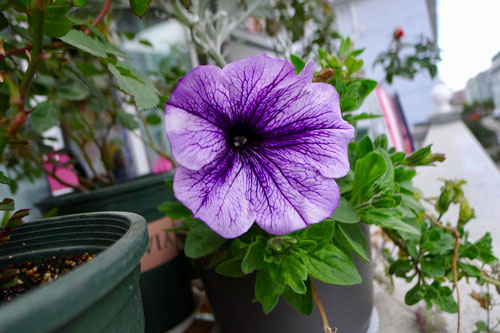
Calibrachoa PictureCalibrachoa InfoCalibrachoa Ecological HabitsHow to Grow and Care For Calibrachoa (Million Bells Plants)Calibrachoa Light RequirementsCalibrachoa Soil CareCalibrachoa WateringCalibrachoa Temperature & Humidity CareCalibrachoa Fertilizer CareVarieties of CalibrachoaCabaret Hot PinkCabaret Purple GlowMillion Bells Terra CottaCan-Can Mocha' CalibrachoaSuperbells Peach CalibrachoaCalibrachoa Common Pests/DiseasesCalibrachoa Design TipsCalibrachoa Companion Plants
Calibrachoa Picture

Calibrachoa Info
| Common Name | Million Bells Flower |
| Hardiness Zones | 9–11 (USDA); grown as an annual in all zones |
| Native Area | South America |
| Toxicity | Non-toxic |
| Flower Color | Coral, yellow, orange, red, pink, blue, purple, burgundy, lavender, cream |
| Hardiness Zones | 9–11 (USDA); grown as an annual in all zones |
| Native Area | South America |
Calibrachoa Ecological Habits
Tender perennial that is winter hardy to USDA Zones 9-11. In St. Louis, it is grown as an annual. It is easily grown in moist, organically rich, well-drained soils in full sun. Tolerates very light shade, but flowering decreases as the amount of part shade increases. Also tolerates drought. Purchase plants in spring and set out after the last frost. Plants produce little if any seed and must be vegetatively propagated. Most hybrid cultivars are patented thus prohibiting vegetative propagation. Deadheading is not required. Unlike its petunia relatives, Calibrachoa does not typically decline during the heat of St. Louis summers.How to Grow and Care For Calibrachoa (Million Bells Plants)
Million bells plants have simple demands: They require sunlight, enough water, and food. The plant is not hard to care for, but paying attention to its needs will keep it blooming from spring well into fall. While they can be planted in garden beds, they fare much better in containers.Calibrachoa Light Requirements
Million bells plants bloom best with at least six hours of full sun, but they can tolerate partial shade—especially in warmer areas, where plants that get some shade are likelier to survive through the summer months. Insufficient sun exposure typically results in reduced blooming.Calibrachoa Soil Care
Calibrachoa plants like fast-draining potting soil, so make sure your pot has good drainage. When planting in garden beds, amend with organic material to ensure richness, and make sure the soil drains well. Mulch is recommended to keep the soil moist and the root system cool.Calibrachoa Watering
Calibrachoa needs to be kept well hydrated but not water-logged. Add water only after the top inch or so of the soil dries out. To check if your plant needs water, stick your finger into the soil up to the second knuckle. If the soil feels dry at your fingertip, water deeply until it drains out of the bottom of your pot. Don’t water again until the soil dries out again. Heat, wind, and lack of humidity can cause your soil to dry out quickly. Depending on your conditions, you may have to water as often as twice a day. Check the soil frequently, especially at the beginning of the season, until you get to know your plants’ needs; watering requirements may change as the summer heats up. Take care not to overwater these plants, as this can encourage root rot.Calibrachoa Temperature & Humidity Care
Million Bells Plants are pretty drought- and heat-tolerant, and even cold-tolerant, but to get the best blooms, don't let them dry out repeatedly. They prefer temperatures between 55 and 65 degrees Fahrenheit. Hardened-off plants can be brought outdoors in the spring months; most can tolerate a mild frost. At the other end of the spectrum, hot weather and dryness can be stressful to the plants. You can revive wilted foliage with a daily misting; just be careful not to mist in direct sun, as this can burn the leaves.Calibrachoa Fertilizer Care
Million Bells Plant is a heavy feeder that can be fed with a slow-release fertilizer and/or a diluted liquid fertilizer regularly. For example, you can start with an organic, slow-release fertilizer mixed into your potting medium, and then give the plant a diluted liquid every couple of weeks throughout the season. Feeding is particularly necessary near the end of the season to promote late blooms. Be careful not to over-fertilize—follow the directions on the label of the plant food closely. Leaves turning light green or yellowish is a sign that the plant needs fertilizer, or possibly more sun.Varieties of Calibrachoa
There are 28 different species in the Calibrachoa genus, but those used for garden cultivation are generally complicated hybrids derived from crossing various species. There are dozens of varieties of Calibrachoa available in a vast array of colors, including:Cabaret Hot Pink
produces loads of bright pink flowers on trailing stems up to 8 inches long
Cabaret Purple Glow
grows 12 inches wide and trails to 8 inches
Million Bells Terra Cotta
Million Bells Terra Cotta orange flowers streaked with red and gold on stems trailing to 8 inches
Can-Can Mocha' Calibrachoa
creamy flowers with a chocolate-purple throat; has a mounding-trailing habit and grows 15 inches tall and wide.
Superbells Peach Calibrachoa
offers salmon-orange blooms with a darker throat. It holds up well to rainy weather and trails to 30 inches.
Calibrachoa Common Pests/Diseases
Root rot or mold infection can set in if these plants are overwatered. (Plants that wilt after watering may be suffering from root rot.) Calibrachoa plants are also susceptible to spider mites and aphids. Prevention in the form of good air circulation, proper water management, and good soil porosity is the best defense. It can also help to wait a while to plant, putting them in the ground around the same time you'd plant tomatoes; planting early can lead to aphid problems. Deer don't seem very interested in Calibrachoa plants, although they are not classified as deer-resistant.Calibrachoa Design Tips
One of the most versatile annuals, Calibrachoa can be incorporated into any landscape. Here's how:Place one or two tall ceramic pots near your home's entrance and fill with colorful Superbells to greet visitors.
Adorn arbors and pergolas with hanging baskets brimming with your favorite colors.
Plant window boxes that receive at least 6 hours of sunlight with colors that complement your home's exterior.
Shepherd's hooks are a great way to add hanging baskets for instant color by a patio, deck or poolside. Hooks are easily moved around for a fresh look.
Place a hanging basket outside your kitchen window to enjoy a burst of color whenever you’re cooking or doing dishes. This will attract hummingbirds and butterflies up close where you can most appreciate them.

Calibrachoa Companion Plants
Calibrachoa combine well with many other annuals. Get creative and make your own custom containers using the principle of "thriller, filler, and spiller."- Combine them with taller plants such as angelonia, coleus, African daisy, purple fountain grass, zonal geranium, or Persian shield.
- Add fillers such as coral bells, lantana, marigold, or sedges.
- Companion trailers include sweet potato vine, fan flower (Scaevola), verbena, bidens, bacopa, or nemesia.
Latest Updated
- Benefits of Bugleweed - 7 Science-backed Health Benefits
- Bugleweed Dangers & Side Effects - Is It Poisonous?
- How to Plant Evergreen Trees - What You Should Know
- When to Plant Evergreens - Grow Guide for Evergreen Trees
- 12 Wonderful Evergreen Shrubs for Your Garden
- 12 Popular Evergreen Plants with Pictures for Beginners
- When And How To Prune A Lilac Bush Like a Pro
- How to Grow & Care for Lilac Vine (Hardenbergia Violacea)
- Japanese Lilac Tree (Syringa Reticulata) Care & Propagation Guide
- Shumard Oak Pros and Cons - What to Know
Popular Articles
- Winter maintenance of Antirrhinum Majus
- How to Grow Terminalia Mantaly Tree
- How to Grow and Care for Crossostephium Chinense
- How to grow Antirrhinum Majus in spring
- Peristeria Elata (Dove Orchid) Profile: Info & Care Guide
- Underwatered Snake Plant (Sansevieria Trifasciata) - Signs And How To Fix
- How to Care for Brazilian Jasmine Plant (Mandevilla Sanderi)
- How to Grow & Care for Graptopetalum Purple Delight in Summer
- Rosa Chinensis (China Rose): Plant Growing & Care Tips
- How to Care for Baby Sun Rose (Aptenia Cordifolia)